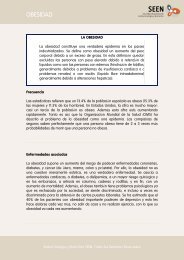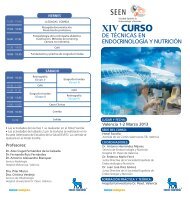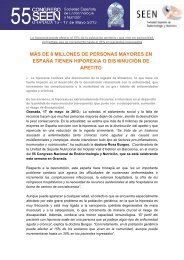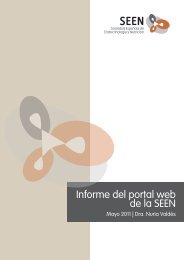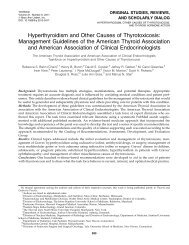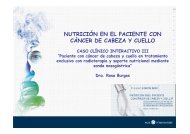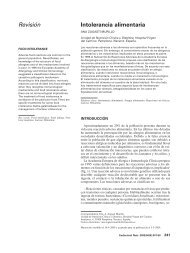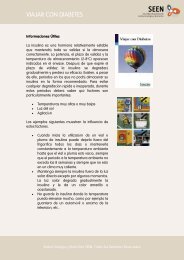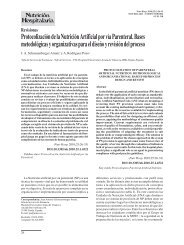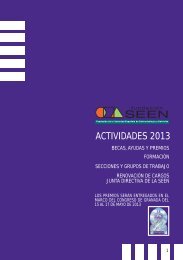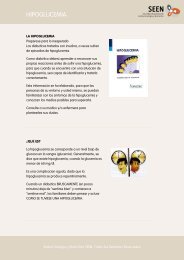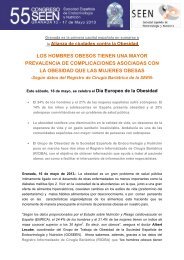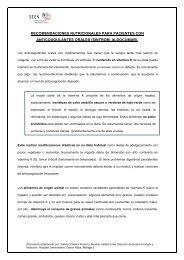Basic Concepts of Fluid and Electrolyte Therapy
Basic Concepts of Fluid and Electrolyte Therapy
Basic Concepts of Fluid and Electrolyte Therapy
Create successful ePaper yourself
Turn your PDF publications into a flip-book with our unique Google optimized e-Paper software.
Table 23: Features <strong>of</strong> DKA <strong>and</strong> HONK compared (approximate values only)<br />
Parameters<br />
Blood glucose 3.5-11.1<br />
mmol/l<br />
(r<strong>and</strong>om)<br />
Normal<br />
DKA<br />
range Mild Moderate Severe<br />
HONK<br />
>14 >14 >14 >30<br />
Arterial pH 7.35-7.45 7.2-7.3 7.0-7.2 7.3<br />
Normal to<br />
HCO 3–<br />
mmol/l 22-30 15-18 10-15 10 >12 >12 Variable<br />
Serum osmolality<br />
mOsm/kg<br />
Average total losses<br />
280-295 280-320 280-320 280-320 >320<br />
Water (litres) 3-4 4-5 >5 6-10<br />
Sodium (mmol) 200-280 280-350 >350 350-700<br />
Potassium (mmol) 200-280 280-350 >350 >350<br />
Treatment<br />
Aims<br />
These are similar in both DKA <strong>and</strong> HONK, although with differences <strong>of</strong><br />
emphasis.<br />
Restore the circulation <strong>and</strong> the ECF deficit by initially rapid fluid<br />
infusion. This also has a beneficial metabolic effect reducing the<br />
blood glucose, addresses circulatory failure <strong>and</strong> prerenal AKI,<br />
reducing both acidosis <strong>and</strong> serum K + .<br />
Seek the underlying cause <strong>of</strong> the diabetic decompensation (e.g.<br />
sepsis) <strong>and</strong> treat it.<br />
97




